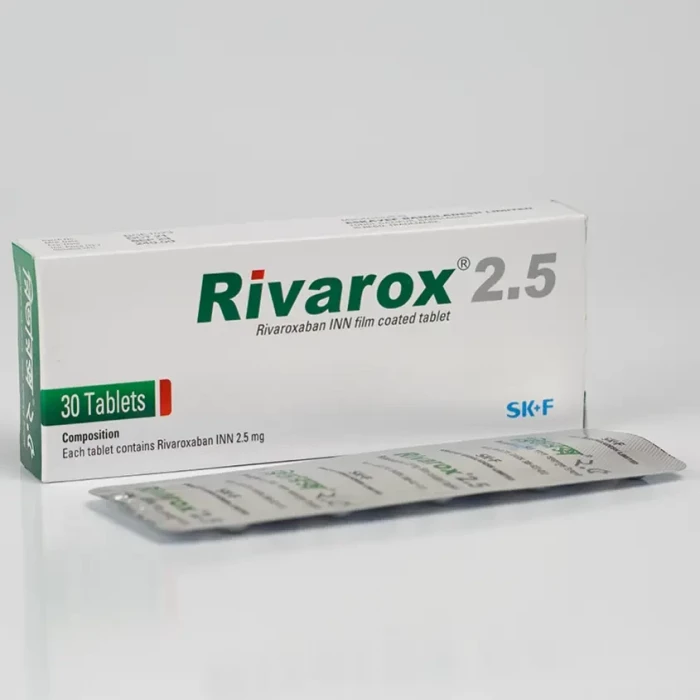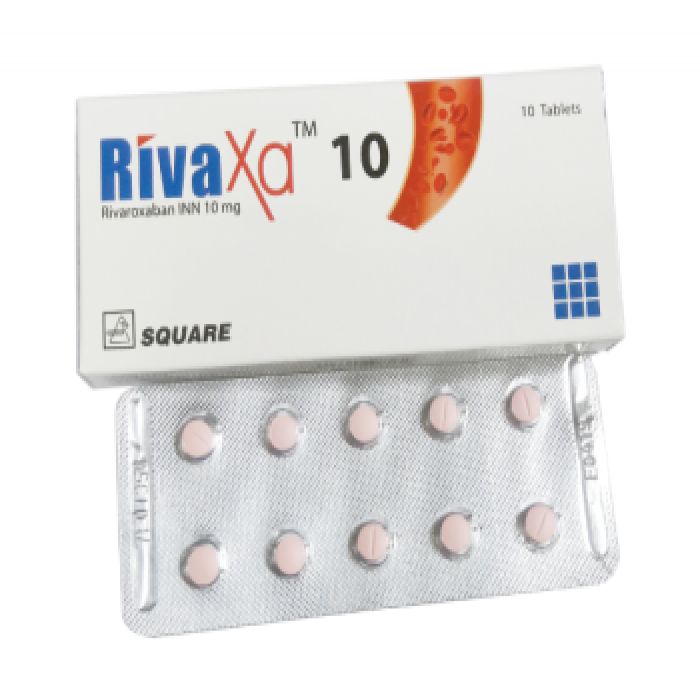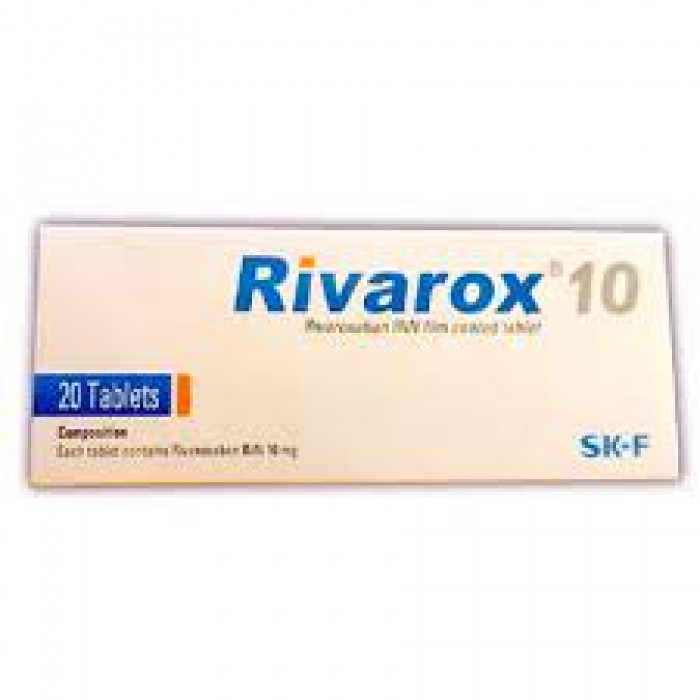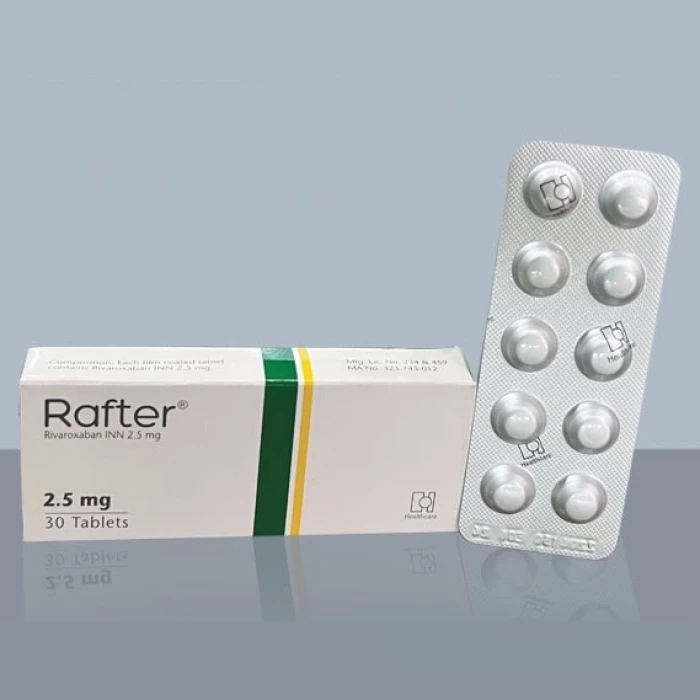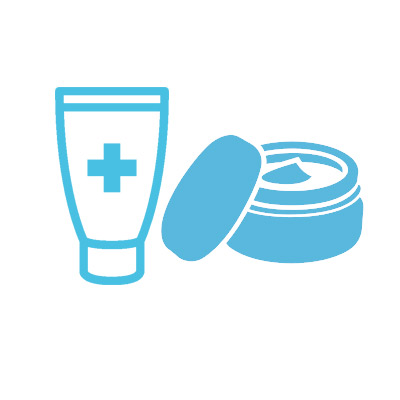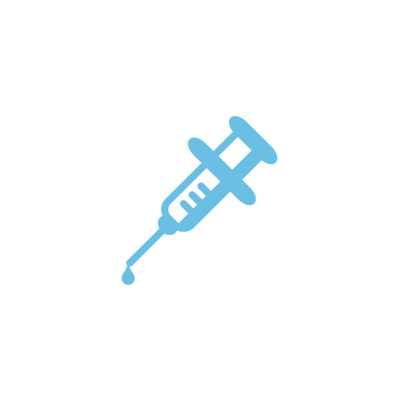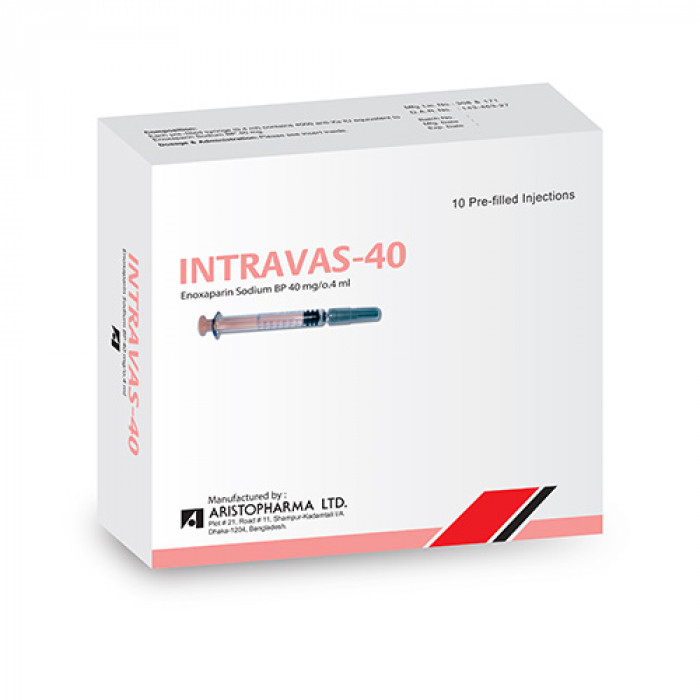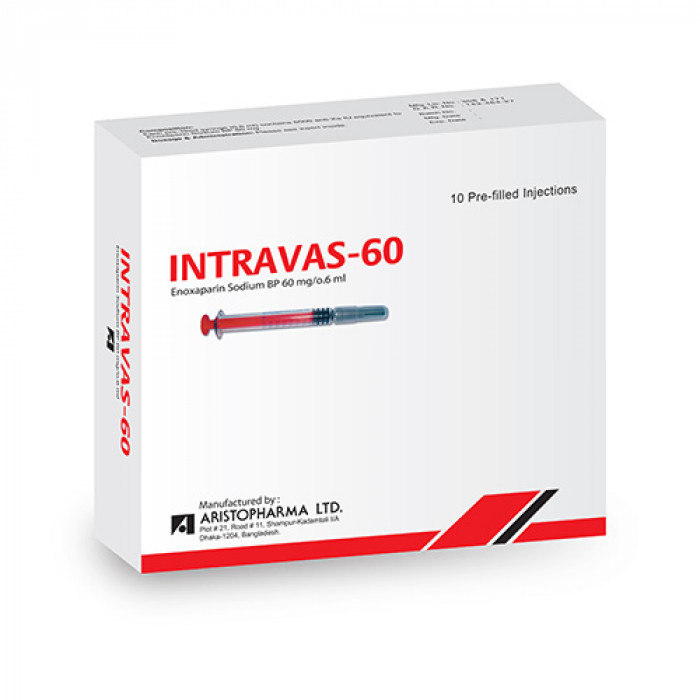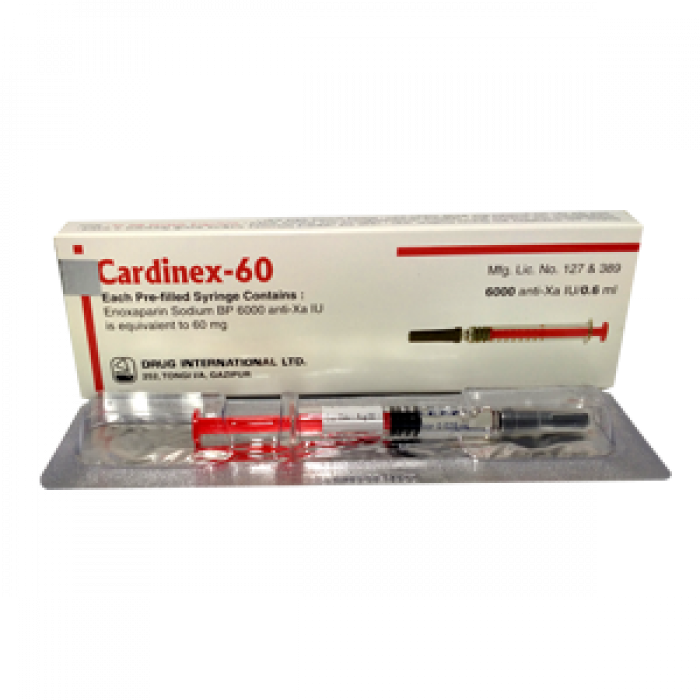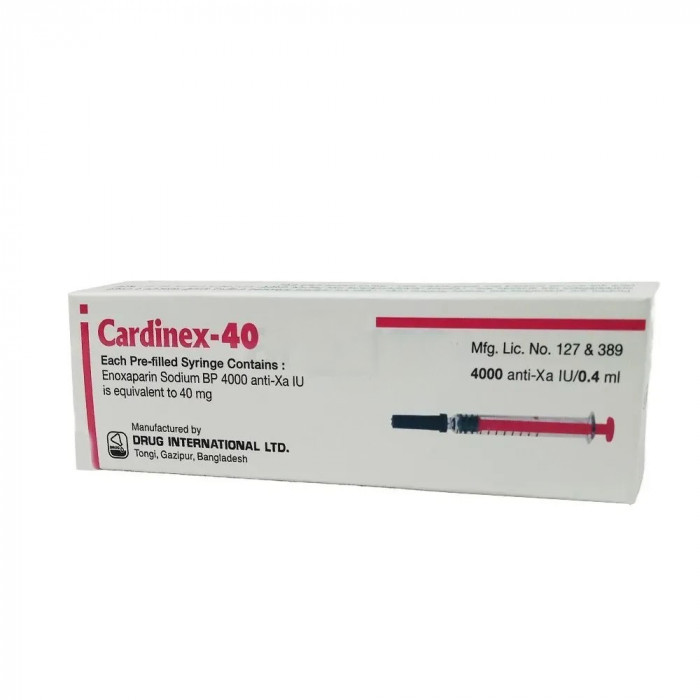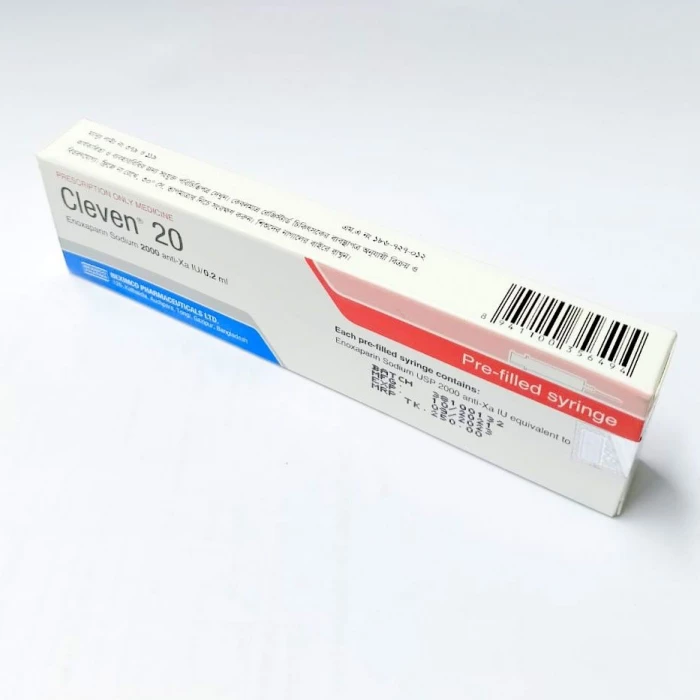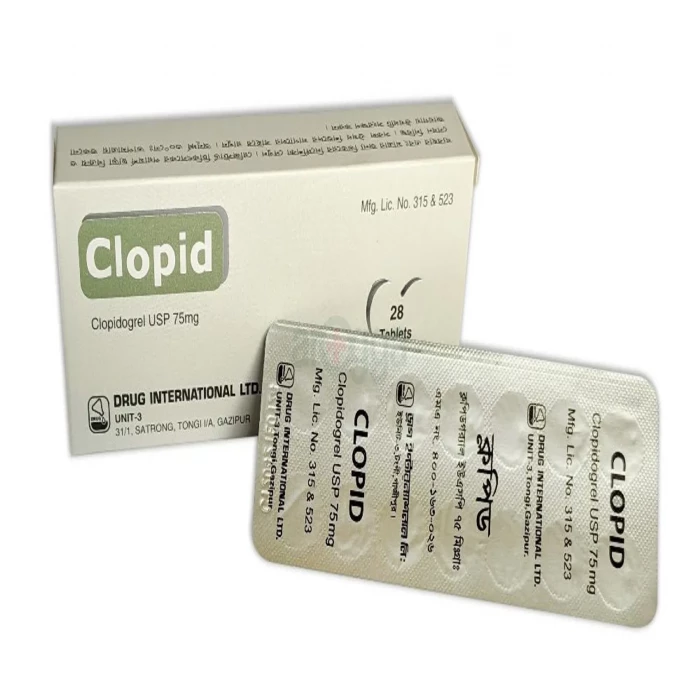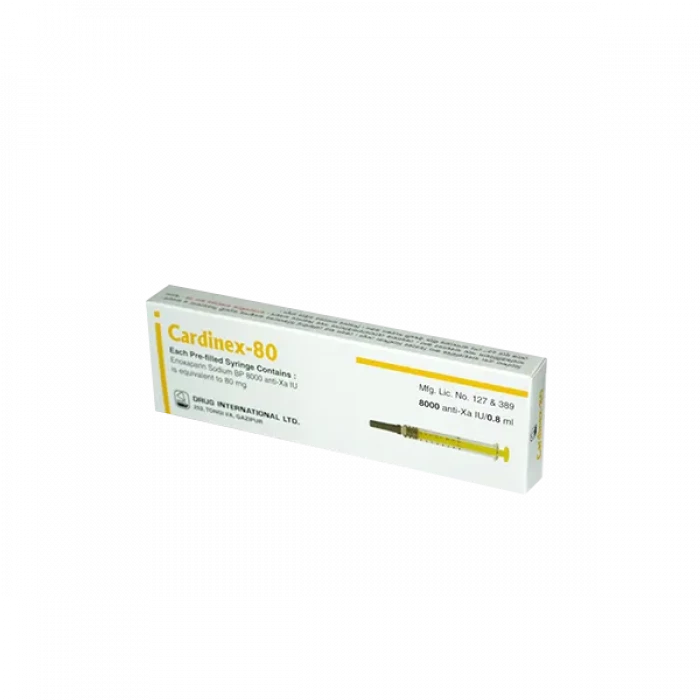
✔ 100% Authentic Product
👁️ Currently Viewing 1976
Cardinex 80mg/0.8ml Injection
Injection Manufacturer/Distributor: Drug International Ltd. Generic Name: Enoxaprin 80 mg/.8 ml Injection
Discount
Price: ৳ 589
MRP:
৳
620
5%
Off

100% Genuine Products, Guaranteed

Safe & Secure Payments, Always

Fast, Secure & Efficient Delivery

Proper Packaging
 Cash on Delivery - All over Bangladesh
Cash on Delivery - All over Bangladesh Regular Delivery - 12-24 Hours, Dhaka City* Charge Tk.39-59
Regular Delivery - 12-24 Hours, Dhaka City* Charge Tk.39-59 Regular Delivery - 24-48 Hours, Other Cities* Charge Tk.99-110
Regular Delivery - 24-48 Hours, Other Cities* Charge Tk.99-110
 ফ্রি ডেলিভারিঃ - ৯৯৯ টাকা+ অর্ডারে, ঢাকা
শহরে
ফ্রি ডেলিভারিঃ - ৯৯৯ টাকা+ অর্ডারে, ঢাকা
শহরে ফ্রি ডেলিভারিঃ - ২৯৯৯ টাকা+ অর্ডারে, ঢাকার
বাহিরে
ফ্রি ডেলিভারিঃ - ২৯৯৯ টাকা+ অর্ডারে, ঢাকার
বাহিরে
100% Genuine Products, Guaranteed
Safe & Secure Payments, Always
Fast, Secure & Efficient Delivery
Proper Packaging
 Cash on Delivery - All over Bangladesh
Cash on Delivery - All over Bangladesh Regular Delivery - 12-24 Hours, Dhaka City* Charge Tk.39-59
Regular Delivery - 12-24 Hours, Dhaka City* Charge Tk.39-59 Regular Delivery - 24-48 Hours, Other Cities* Charge Tk.99-110
Regular Delivery - 24-48 Hours, Other Cities* Charge Tk.99-110 ফ্রি ডেলিভারিঃ - ৯৯৯ টাকা+ অর্ডারে, ঢাকা
শহরে
ফ্রি ডেলিভারিঃ - ৯৯৯ টাকা+ অর্ডারে, ঢাকা
শহরে ফ্রি ডেলিভারিঃ - ২৯৯৯ টাকা+ অর্ডারে, ঢাকার
বাহিরে
ফ্রি ডেলিভারিঃ - ২৯৯৯ টাকা+ অর্ডারে, ঢাকার
বাহিরে
✅ Description:
Indications of Cardinex 80 SC Injection
Treatment of deep vein thrombosis with or without pulmonary embolism with enoxaparin.
Concurrently administered aspirin for the treatment of unstable angina and non-Q-wave myocardial infarction.
During haemodialysis, thrombus development in the extracorporal circulation is avoided.
Prophylaxis for venous thromboembolic illness (the prevention of blood clots in the veins), particularly in cases when orthopedic or general surgery is involved.
Thromboembolic disease prevention in medical patients who are bedridden owing to an acute illness, such as heart insufficiency, respiratory failure, severe infections, or rheumatic disorders.
Pharmacology of Cardinex 80 SC Injection
Enoxaparin Sodium is a heparin with a low molecular weight that has a significant anti-Xa activity but a poor anti-lla or antithrombin activity. Enoxaparin Sodium does not enhance bleeding time at the levels recommended for the various purposes. Enoxaparin Sodium has no effect on the activated partial thromboplastin time at preventative dosages (aPTT). It has no effect on platelet aggregation or fibrinogen binding to platelets. Enoxaparin Sodium is metabolized mostly in the liver.
Dosage & Administration of Cardinex 80 SC Injection
Treatment of deep vein thrombosis, with or without pulmonary embolism: Subcutaneously 100 anti-Xa lU/kg twice daily for 10 days or Subcutaneously 150 anti-Xa lU/kq once daily for 10 days. Oral anticoagulant therapy should be initiated when appropriate and Enoxaparin Sodium treatment should be continued until a therapeutic anticoaqulant effect has been achieved.
Treatment of unstable angina and non-Q-wave myocardial infarction, administered concurrently with aspirin: Subcutaneously 100 anti-Xa lU/kg twice daily for 2- 8 days. Should be administered concurrently with oral aspirin (100 to 325 mg once daily). Treatment with Enoxaparin Sodium in these patients should be prescribed fora minimum of 2 days and continued until clinical stabilization.
Prevention of thrombus formation in extra corporeal circulation during hemodialysis: Recommended dose is 100 anti-Xa lU/kg. For patients with a high risk of hemorrhage, the dose should be reduced to 50 anti-Xa lU/kg for double vascular access or 75 anti-Xa lU/kg for single vascular access. During hemodialysis, Enoxaparin Sodium should be introduced into the arterial line of the circuit at the beqinninq of the dialysis session.
Prophylaxis of venous thromboembolic disease in surgical patients:
Patients undergoing general surgery with a moderate risk of thromboembolism (e.g. abdominal surgery): Subcutaneously 2000 anti-Xa IU (0.2 ml) or 4000 anti-Xa IU (0.4 ml) once daily for 7 to 10 days. The first injection should be given 2 hours before the surgical procedure.
Patients undergoing orthopedic surgery with a high risk of thromboembolism: Subcutaneously 4000 anti-Xa IU (0.4 ml) once daily for 7 to 10 days. The first injection should be given 12 hours before the surgical procedure. Longer treatment duration may be appropriate in some patients like continued therapy with 4000 anti-Xa IU once daily for 3 weeks following the initial therapy has been proven to be beneficial in orthopaedic surqery.
Prophylaxis of venous thromboembolic disease in medical patients: Subcutaneously 4000 anti-Xa IU (0.4 ml) once daily for 6- 14 days.
Interaction of Cardinex 80 SC Injection
Unless strictly necessary, medications that impair hemostasis should be stopped prior to starting Enoxaparin Sodium therapy. Other antiplatelet aggregation agents include glycoprotein llb/llla antagonists, acetylsalicylic acid (and derivatives), NSAIDs (including ketorolac), ticlopidine,clopidogrel,dextran 40,glucocorticoids, thrombolytics and anticoagulants, and thrombolytics and anticoagulants. If the combination is appropriate, it should be used under close clinical and laboratory supervision.
Contraindications
Patients who have previously been allergic to Enoxaparin Sodium, heparin, or other low molecular weight heparins. Active severe bleeding and circumstances that increase the likelihood of uncontrolled hemorrhage, such as recent hemorrhagic stroke.
Side Effects of Cardinex 80 SC Injection
Thrombocytopenia, haemorrhage (bleeding), and serum aminotransferase increases. Pain, bluish markings, and skin rash at injection sites are all common side effects. Neurologic damage have been reported in cases of neuraxial hematomas caused by the use of Enoxaparin and spinal/epidural anesthesia or spinal puncture.
Pregnancy & Lactation
Category B pregnancy. Enoxaparin Sodium does not appear to penetrate the placental barrier in humans. Enoxaparin Sodium should only be taken during pregnancy if obviously needed, as there are no good and well-controlled studies in pregnant women. Thromboembolism may be more common in pregnant women who have mechanical prosthetic heart valves.
Enoxaparin is not known to be eliminated in human milk. Because many medicines are excreted in human milk and there is a risk of serious adverse reactions in nursing infants, it is important to consider whether to stop nursing or stop taking Enoxaparin, taking into account the value of Enoxaparin to the mother and the known benefits of breastfeeding.
Precautions & Warnings
In preventative and curative treatment, Enoxaparin Sodium should be injected deep subcutaneously, and during hemodialysis, it should be given intravascularly. The intramuscular route should not be used. In conditions where there is a higher risk of bleeding, such as impaired hemostasis, a history of peptic ulcer, recent ischemic stroke, uncontrolled severe arterial hypertension, diabetic retinopathy, and recent neuro- or ophthalmologic surgery, and concomitant use of medications that affect hemostasis, Enoxaparin Sodium should be used with caution. Platelet counts should be checked before starting treatment and then on a frequent basis after that.
Storage Conditions
Protect from light and moisture by storing in a cool, dry location. Store at a temperature of no more than 25°C. Do not keep in the fridge or freezer. Keep out of children's reach.
⚠️Disclaimer:
At ePharma, we’re committed to providing accurate and accessible health information. However, all content is intended for informational purposes only and should not replace medical advice from a qualified physician. Please consult your healthcare provider for personalized guidance. We aim to support, not substitute, the doctor-patient relationship.




